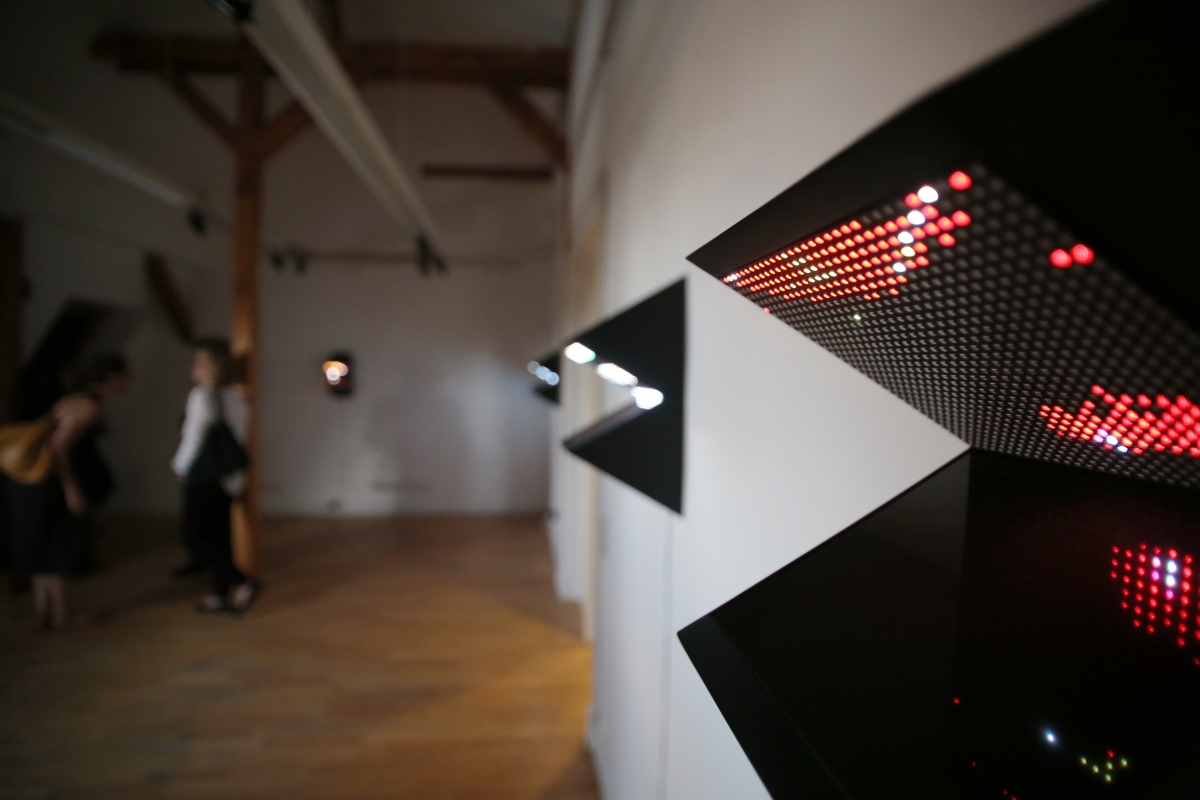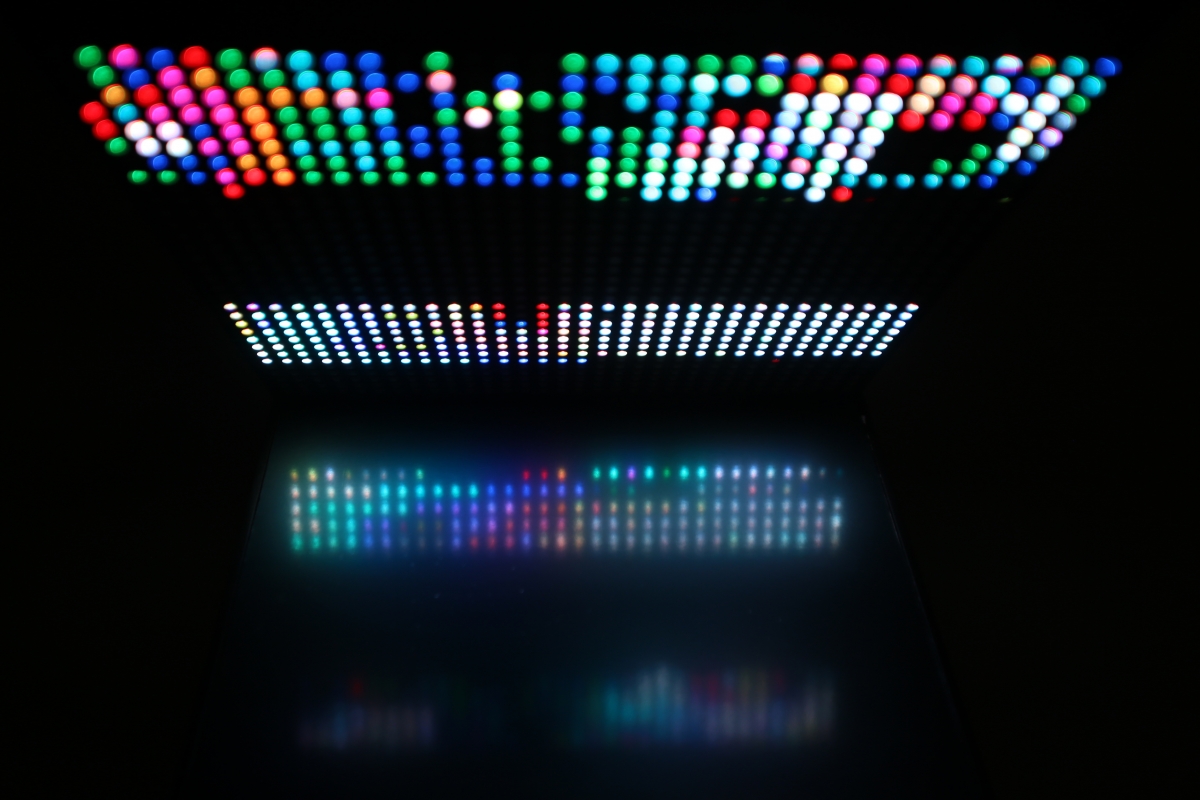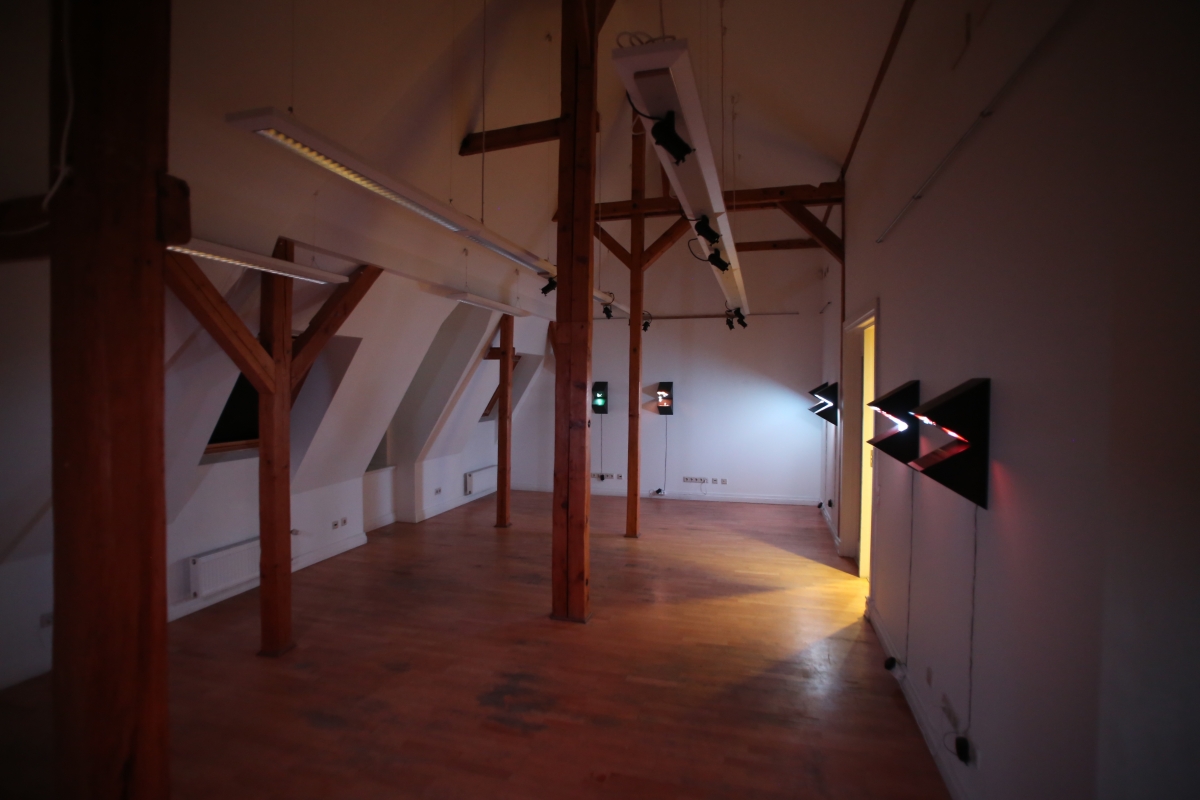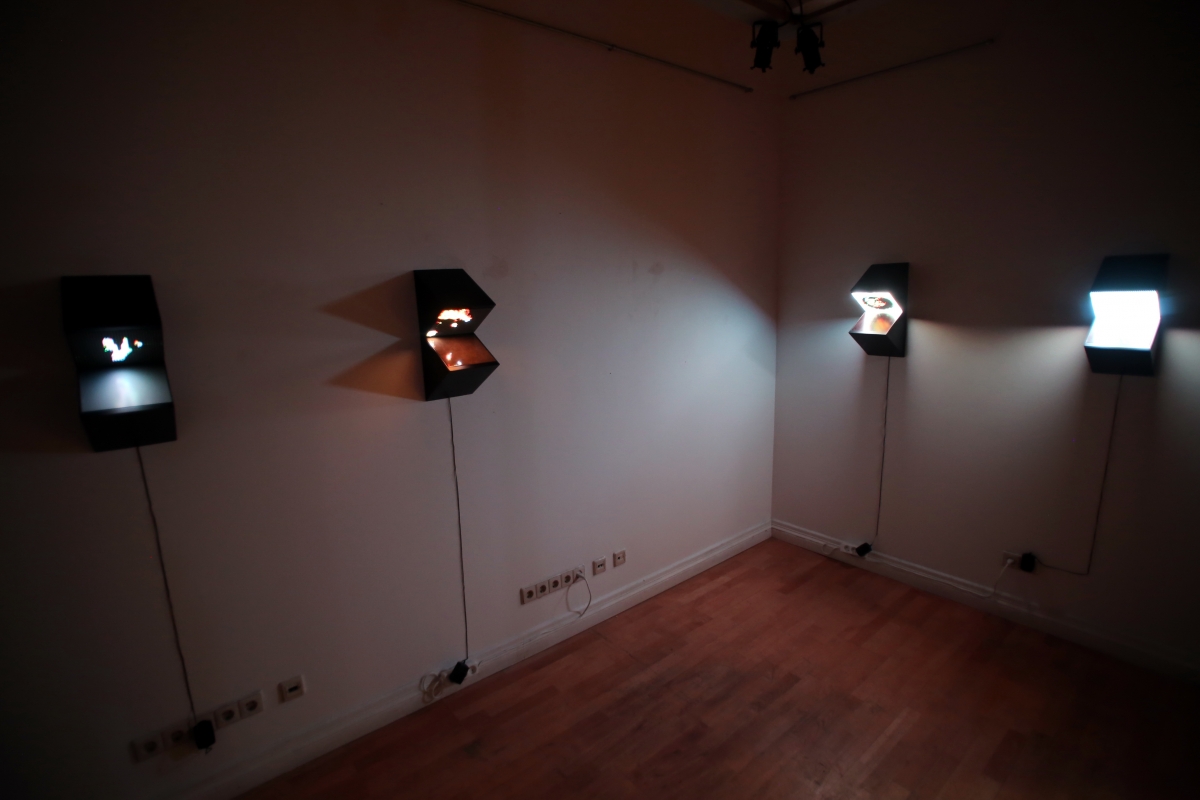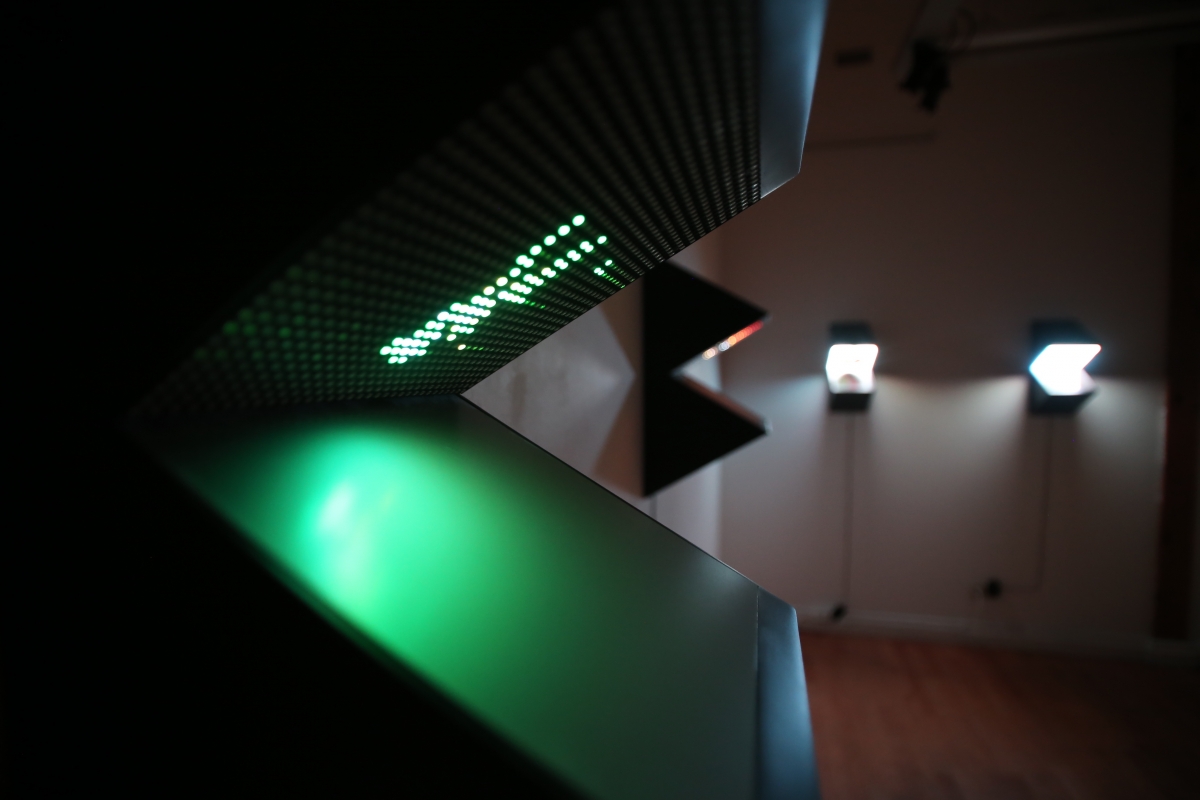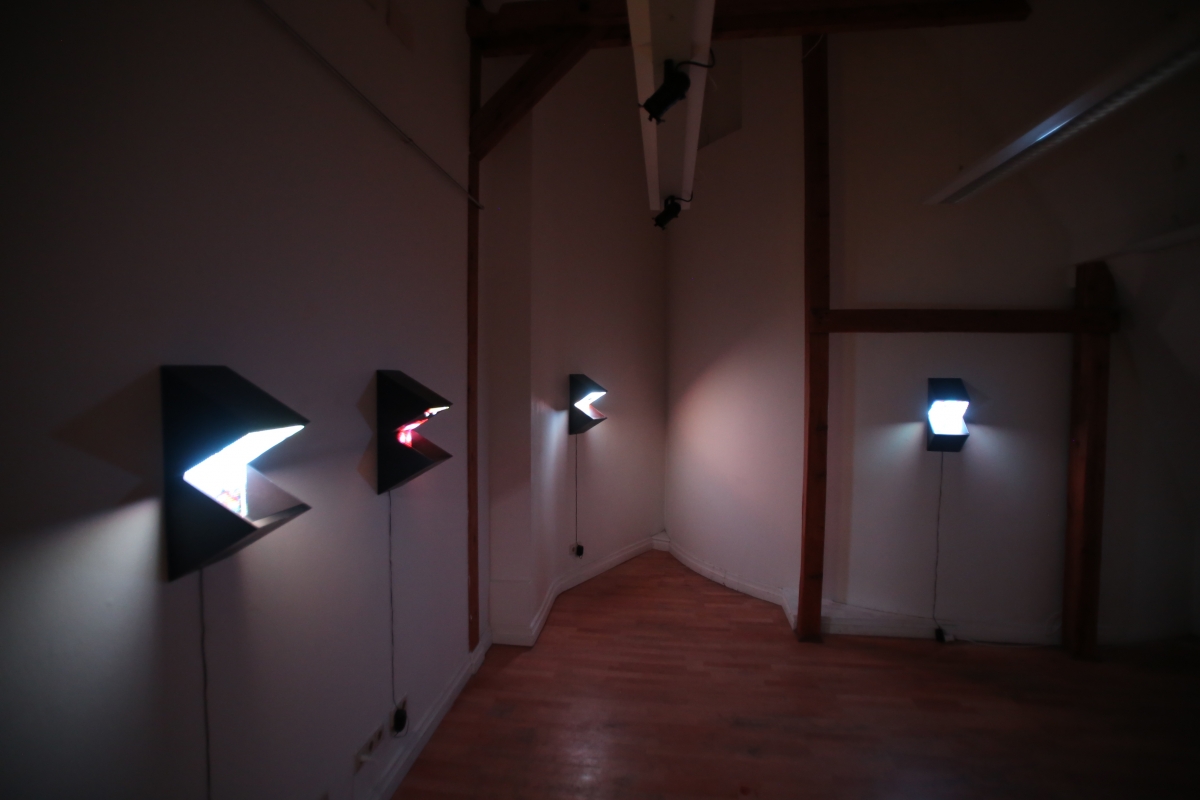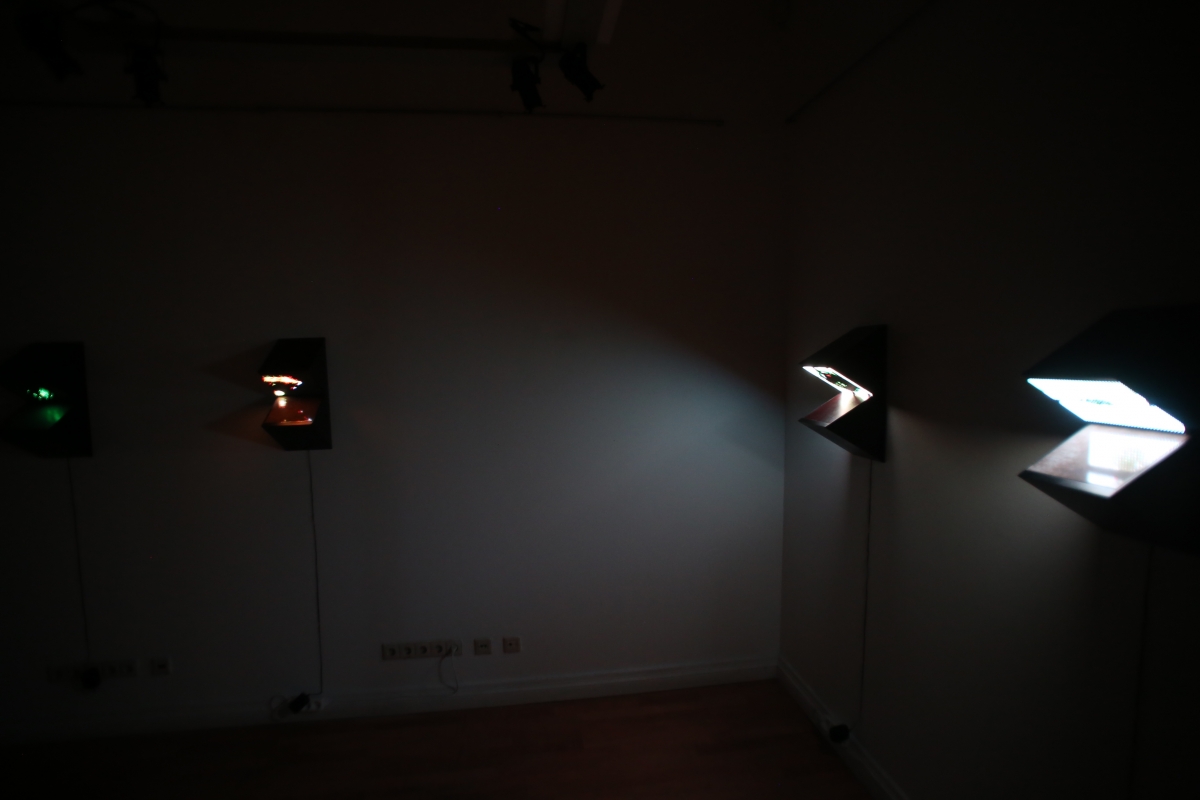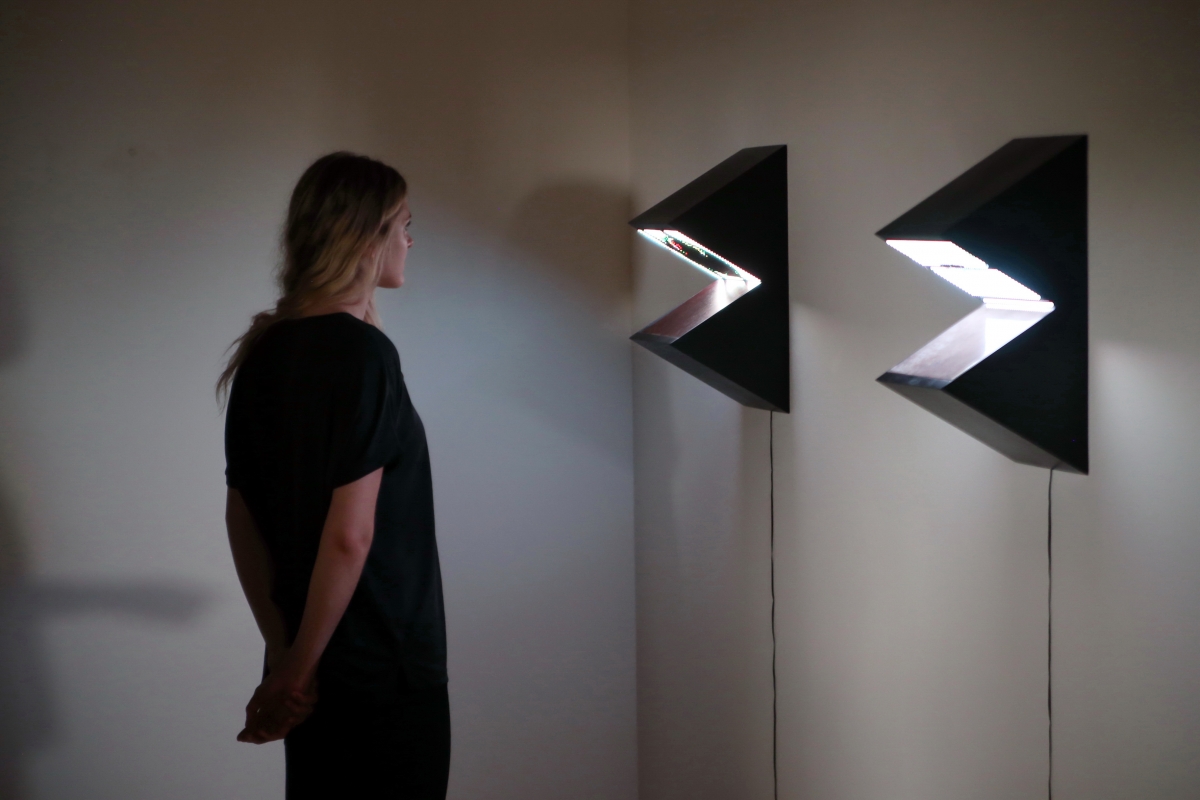 A review of the Signālpāri (Signaling Pairs) exhibition at the Office Gallery of the Latvian Centre for Contemporary Art (12 May to 5 August 2016), featuring Latvian poet, artist and Orbīta textgroup participant Artūrs Punte, and Russian new media artist Aleksey Grishchenko.
A review of the Signālpāri (Signaling Pairs) exhibition at the Office Gallery of the Latvian Centre for Contemporary Art (12 May to 5 August 2016), featuring Latvian poet, artist and Orbīta textgroup participant Artūrs Punte, and Russian new media artist Aleksey Grishchenko.
The exhibition is based on feelings Artūrs Punte experienced as he recorded various night-time urban sounds. In addition to the audio material he obtained, he was also mesmerised by the great diversity of lights in the night-time city, which he recorded on video but which lost much of their sparkle and life in the process of being preserved on film. Many of us are familiar with the situation—when making environmental recordings, I am also often irritated that the recorded sound does not sound the same as it does when heard live. On a psychoacoustic level, our ears, for example, are able to hone in on one particular sound, as if pulling it in closer and enjoying it separately from the background noise. On a recording, however, the whole acoustic landscape often seems simply flat, with no depth.
In order to obtain maximally authentic sound for the Signaling Pairs exhibition, the artists created objects that mimic city lighting—eight boxes attached to the wall and containing light diode panels, or screens, with the image from each of the screens reflecting on a specially prepared surface on the bottom of its corresponding box. The objects demonstrate the transfer of video to 32×32-format diode matrices. Aleksey Grishchenko must be mentioned in relation to these technical solutions. He lives and works in Novosibirsk, Russia, a place where artists’ styles are powerfully intertwined with the technical spirit that dominates the city (Novosibirsk is an important centre for military industry, engineering and research). And Grishchenko is a fine example. He is a media artist who works with technical solutions, and also creates them himself. The diodes in Signaling Pairs are his work.
The intimate nature of the exhibition suits the small LCCA gallery. The untitled works of art are displayed in a darkened space, and the fine hum generated by the screens give the place a feeling of fluid movement. The content of the videos varies from very obscure to visually clear figural materials. Spots of colour here and there conjure associations with, for example, the flicker and glare of neon signs or the blurry view through a fogged-up car window during rain. Basically, they’re short, loop-like fragments of motion, although the longest of the videos shows the view from a train window of a landscape containing poles, trees, fences, houses, stations, freight cars and a train suddenly passing in the opposite direction. I find that such video material is the essence of a city, and one could watch it for hours. And it seems like there’s too little of it in the world.
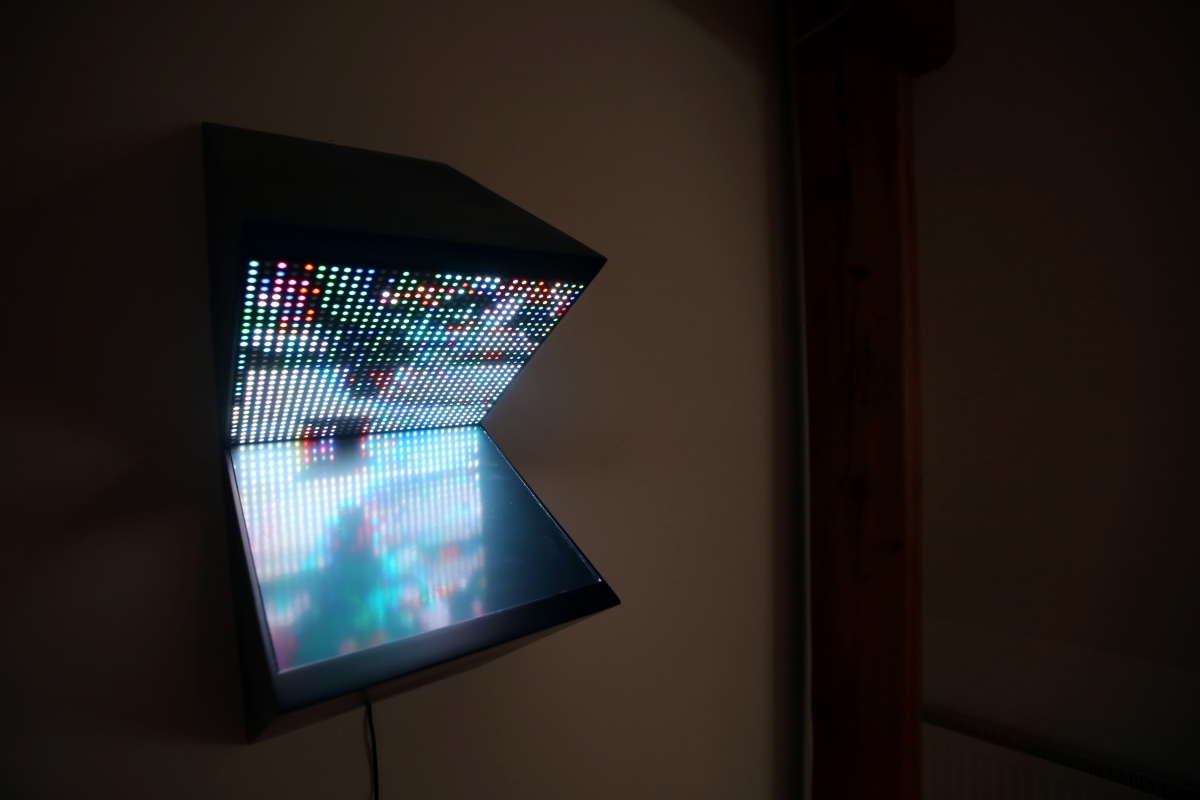
The references to real objects in the videos include, for example, such light sources as advertising lights, yellow traffic lights, flashing road construction lighting, half-burnt-out lanterns, signal lights, lighthouse beacons, railway signals, lights in lonely windows, the flashing back light of a bicycle as it drives off into the distance, and so on. Today, one could probably also add to this list the glaring cell phone screens of lone Pokemon catchers. In any case, loneliness plays the most significant poetic role in the works shown in this exhibition. All of these many lights basically flash their signals out into nothingness, together creating the autonomy of this city running idle, and thus also creating this wonderful feeling of urban ambience of being out there in the night-time.
A sentimental dimension can also be attributed to the visual aesthetic of these artworks. The chemically pixelated buzz of the screens gives off a general retro-futuristic feel, and also brings to mind eight-bit console video games, or, more precisely, rows and rows of little Pac Man dots. Another of the works, for example, which consists of an endless view of a highway and utility poles sliding by, resembles the crude programming style of early video games, in which identical, simply combined patterns formed the landscapes in race games (and others). The aspect of this exhibition fits nicely with the general dialect of contemporary visual communication.
The (literally) unclear character of the works reminds me of moments from my childhood, when, standing at a bus stop on wet autumn evenings and gazing into the distance down the street, I would squint my eyes until the scene became blurry, and then I would turn my head from side to side and visually play with the slowly moving stream of car lights. That’s what this exhibition is like—an innocent delight in simple things. In other aspects, Signaling Pairs is emotionally neutral. As the artists themselves (who work together like a pair of signals, despite being physically far from one another, constantly sending information signals back and forth) have said, these lonesome light signals are like an acknowledgement of existence. Simply the fact. The exhibition Signaling Pairs is a romanticisation of the daily environment around us, reminding us once again of the undeniable and irresistible obviousness of human artistic perception. Just like splashes of colour, the natural visual forms of the urban environment have always had a certain archetypical aesthetic attraction. And, therefore, the exhibition can be enjoyed in a similar way as one would an abstract visual poem.
Nowadays, in order to ‘feed’ an audience content such as this, it is usually necessary to communicate it through the rhetoric of conceptualism. The value of Signaling Pairs, however, is its unpretentious and free manner of presenting the artwork. There are no stabs at curatorial-thematic-ideological layering, or untamed attempts at making the exhibition esoteric. The exhibition’s only conceptual motor is the technical solutions of the artwork, which in this case are completely justified, without becoming an end in themselves. Without this technological element, or with a less adept team of artists, the art-institute thinking and attitude would most likely deem the endeavour weak and unoriginal, especially considering that the separate works of art do not form a unified story. The exhibition is like a rough draft, a work in progress, a demo version and pilot project, throughout which a skilful creative balance and clarity of thought can be felt.
Photography by Arnis Kalniņš.

